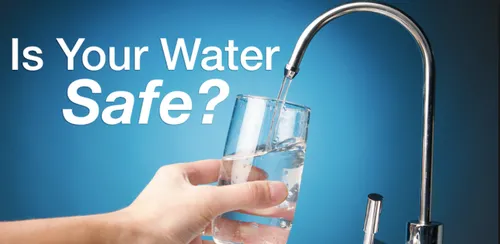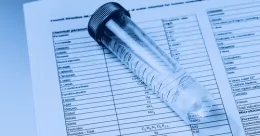
What is a Consumer Confidence Report (CCR)?
A Consumer Confidence Report (CCR) is an annual water quality report that provides information about the drinking water supplied by your local water utility. Mandated by the U.S. Environmental Protection Agency (EPA) under the Safe Drinking Water Act, the CCR is designed to help consumers understand the quality of their drinking water and to promote transparency and accountability among water suppliers.
Key Components of a CCR
1. Water Source Information: The report details the sources of your drinking water, such as rivers, lakes, reservoirs, or groundwater wells. It may also include information on the watershed and any potential contamination risks.
2. Water Quality Testing Results: The CCR lists the contaminants found in the drinking water, including their levels and whether they meet federal and state safety standards. Common parameters tested include:
- Microbial contaminants (e.g., bacteria, viruses)
- Inorganic compounds (e.g., lead, nitrate)
- Organic chemicals (e.g., pesticides, solvents)
- Radioactive contaminants
3. Compliance with Regulations: The report indicates whether the water utility has complied with federal and state drinking water regulations, including any violations.
4. Health Information: It often includes information about health effects associated with specific contaminants, particularly for vulnerable populations such as infants, pregnant women, and the elderly.
5. Contact Information: The CCR provides contact details for the local water utility, allowing consumers to ask questions or obtain more information.
Why is the CCR Important?
- Consumer Awareness: The CCR empowers consumers by providing them with information about the quality and safety of their drinking water, fostering informed decision
- Public Health Protection: By revealing potential health risks associated with water quality issues, the CCR helps consumers take necessary precautions, particularly for sensitive populations.

- Transparency and Accountability: The CCR holds water utilities accountable for their water quality management practices and encourages them to maintain high standards.
How to Access Your CCR
1. Visit Your Water Utility's Website: Most local water utilities publish their CCRs online. You can typically find it in a dedicated section for water quality or consumer information.
2. Contact Your Water Utility: If you cannot find your CCR online, contact your local water utility directly and request a copy. They are required to provide you with this information.
3. Check State Resources: Some states compile CCRs from various utilities and make them available on state government websites.
How to Read Consumer Confidence Reports (CCRs) for Drinking Water
Here's a guide on how to read and interpret these reports:
Step-by-Step Guide to Reading a CCR:
1. Start with the Introduction:
- Read the introductory section to understand the purpose of the report and find contact information for your water supplier if you have questions.
2. Understand the Source of Your Water:
- Review the section that describes where your water comes from. This will give you context about the potential sources of contamination and the geographical area served.
3. Familiarize Yourself with Definitions:
- Pay attention to the definitions and abbreviations section. Understanding these terms is crucial for interpreting the data in the report.
4. Review the Detected Contaminants Table:
- Contaminant Name: Identifies the substance tested.
- Source: Describes where the contaminant likely comes from (e.g., runoff from agricultural fields, erosion of natural deposits, industrial discharges).
- Highest Level Detected: The maximum concentration of the contaminant found in your water during the reporting period.
- Range of Levels Detected: Shows the variation in contaminant levels throughout the year.
- MCL (Maximum Contaminant Level): The highest level of a contaminant allowed in drinking water by regulatory standards.
- MCLG (Maximum Contaminant Level Goal): The level of a contaminant below which there is no known or expected risk to health.
- Potential Health Effects: Information on the health risks associated with the contaminant if it exceeds the MCL.
5. Check for Violations:
- Look for any listed violations and read the explanations. This section will tell you if and when your water supply failed to meet any regulatory standards and what actions were taken to address the issue.
6. Read the Health Information:
- Pay special attention to health-related information, especially if you or anyone in your household is part of a vulnerable population.
7. Explore Additional Information:
- Review any additional information provided about water conservation, protecting your water source, or other relevant topics. This can help you contribute to maintaining water quality.
Example of Reading a Detected Contaminants Table:

Nitrate: The contaminant being measured.
5.0 ppm: The highest level of nitrate detected in the water during the reporting period.
1.0 - 5.0 ppm: The range of nitrate levels detected over the year, indicating that at times, nitrate concentrations were as low as 1.0 ppm and as high as 5.0 ppm.
10 ppm (MCL): The Maximum Contaminant Level set by regulatory agencies. This means that nitrate levels in drinking water should not exceed 10 parts per million.
10 ppm (MCLG): The Maximum Contaminant Level Goal, which is the ideal level of nitrate in drinking water to ensure no known or expected health risks.
No (Violation): Indicates that there was no violation of the MCL for nitrate, meaning the highest detected level (5.0 ppm) did not exceed the regulatory limit (10 ppm).
Runoff from fertilizer use; leaching from septic tanks (Potential Source): Describes common sources of nitrate contamination.
Health Effects: Provides information on the potential health impacts of nitrate, especially for vulnerable groups like infants.
Summary of Key Points to Check in a CCR:
1. Compliance: Ensure that the water supplier is in compliance with all regulatory standards. Look for "No" under the violation column.
2. Contaminant Levels: Compare the highest level detected of each contaminant with its MCL. Levels below the MCL are generally considered safe.
3. Health Effects: Note any health risks associated with contaminants, particularly if levels are close to or exceeding the MCL.
4. Sources of Contaminants: Understand where contaminants are coming from to better appreciate the context of your local water quality.
Final Note!
Reading and understanding your Consumer Confidence Report empowers you to make informed decisions about your drinking water. By reviewing the CCR annually, you can stay informed about the quality of your water, any potential health risks, and the efforts your local water supplier is making to ensure clean and safe drinking water. If you have any specific questions or need further clarification on any section of the report, don't hesitate to contact your local water supplier or regulatory agencies. If you need more help interpreting your CCR or have any additional questions, please email us at anrsocalwater@gmail.edu
Additional Resources:
- EPA Safe Drinking Water Hotline: 1-800-426-4791. For questions about drinking water quality and regulations.
- Safe Drinking Water Act: Consumer Confidence Reports (CCR) ( https://www.epa.gov/ccr)
- Local Water Supplier's Website: Most water suppliers publish their CCRs online. Check your water bill for contact information, or visit the supplier's website.
- California State Water Resources Control Board: Provides additional information and resources on water quality in California.
- SWRCB (https://www.waterboards.ca.gov/drinking_water/certlic/drinkingwater/CCR.html)
- Orange County Water District (https://www.ocwd.com/news-events/newsletter/2019/july-2019/how-to-read-a-water-quality-report/)

